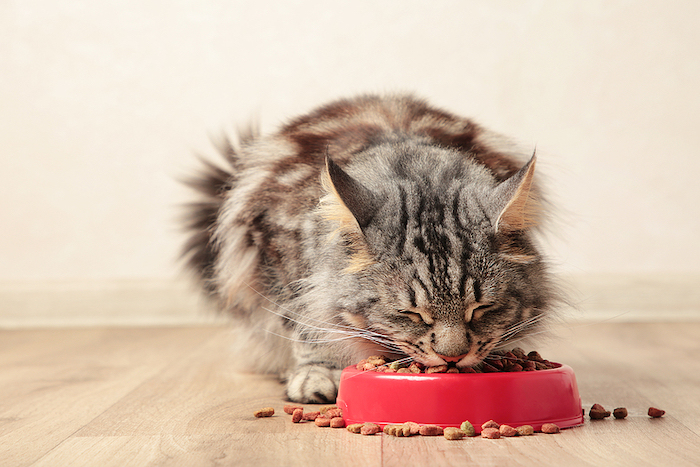In the world of pet care, nutrition stands as a cornerstone of maintaining your pet’s health and vitality. The right diet is not just about filling a bowl; it’s about nourishing your pet’s body and soul. Over the years, the pet food industry has evolved remarkably, transitioning from basic kibble to an array of options tailored to meet every pet’s unique dietary needs.
Today, pet owners are presented with a plethora of choices when it comes to their pet’s health – from specialized diets addressing specific health concerns to organic and natural options. Our guide is designed to cut through the confusion, offering clear, comprehensive insights into pet nutrition. It’s about empowering you, the pet owner, with knowledge and tools to make informed decisions, ensuring your furry companion thrives at every stage of their life.

Understanding Pet Nutrition Basics
A balanced pet diet is the bedrock of good health, and understanding its components is key to ensuring your pet’s well-being. Each element in their diet plays a unique and vital role.
Proteins are the building blocks of a pet’s body. Essential for growth and repair, they support muscle development, skin health, and immune function. High-quality proteins are crucial, especially for active and growing animals.
Carbohydrates provide energy. While not all pets require high carbohydrate levels, especially in processed forms, they are important for energy, particularly in active pets. Fiber, a type of carbohydrate, is also essential for digestive health.
Fats are more than just energy sources; they are necessary for the absorption of certain vitamins and for providing essential fatty acids. They maintain skin and coat health, and support brain function, especially important for younger and more active pets.
Vitamins and Minerals are the unsung heroes of pet nutrition. They play numerous roles, from bone health to blood clotting, and are essential in tiny amounts for various bodily functions. A well-balanced diet ensures your pet gets these micronutrients in the right proportions.
Understanding these basics is the first step in providing a diet that supports your pet’s health, ensuring they lead a happy, active, and long life. Always consult with a vet when seeking routine care for your pet, should you have any specific concerns about diet.

Nutritional Needs for Different Life Stages
Understanding the changing nutritional needs of pets through different life stages is crucial for their long-term health and well-being.
Puppies and Kittens: In their formative years, young pets require diets rich in proteins and calories to support rapid growth and development. Essential nutrients like calcium and phosphorus are vital for healthy bone development, while DHA aids in brain and vision development.
Adult Pets: As pets reach adulthood, their diets should shift to maintain optimal health and prevent obesity. Balanced proportions of proteins, carbohydrates, and fats are key, along with essential vitamins and minerals to support daily energy needs and overall health maintenance.
Senior Pets: Aging pets often need diets lower in calories but rich in proteins to maintain muscle mass. Joint-supporting supplements like glucosamine can be beneficial. Digestibility becomes crucial as their metabolism and digestive system slow down.
Pregnant or Nursing Pets: These pets require increased calories and nutrients, particularly proteins and calcium, to support fetal development and milk production. Their diets should be energy-dense and nutrient-rich to cater to the heightened demands of pregnancy and lactation.
Each life stage carries unique nutritional requirements. Tailoring your pet’s diet to these stages ensures they receive the right balance of nutrients to thrive at every age.
Wet Food vs. Dry Food: Pros and Cons
When it comes to pet nutrition, the debate between wet and dry food is a common dilemma for pet owners. Understanding the pros and cons of each can help you make an informed decision tailored to your pet’s needs.
Wet Food Pros: Wet food is often more palatable and enticing for pets, making it a good choice for picky eaters. Its high moisture content is beneficial for hydration, especially important for pets that don’t drink enough water. Wet food can also be easier to chew, a plus for older pets or those with dental issues or who are prone to stomach pain.
Wet Food Cons: It can be less convenient in terms of storage and feeding, as it requires refrigeration after opening. Wet food can also be more expensive per serving compared to dry food.
Dry Food Pros: Dry food is convenient to store and serve, making it a practical choice for many pet owners. It’s generally more cost-effective and can help in maintaining dental health, as the kibble’s texture helps reduce plaque and tartar buildup.
Dry Food Cons: Some pets may find dry food less appealing. It’s lower in moisture, which means it’s less suitable for pets needing increased hydration. Additionally, some dry foods may have higher carbohydrate content, which might not be ideal for all pets.
The choice between wet and dry food should consider factors like your pet’s age, health, hydration needs, and personal preference. A combination of both can sometimes offer the best of both worlds, ensuring palatability and hydration while being cost-effective and beneficial for dental health. Consulting with a veterinarian can provide tailored advice for your pet’s specific dietary needs.
Conclusion
As you navigate the complexities of pet nutrition, remember that the most informed choices are made in collaboration with professionals. Consulting with a veterinarian is invaluable in tailoring a diet that aligns perfectly with your pet’s unique health profile and nutritional needs. They can offer expert guidance, ensuring your pet receives the right balance of nutrients to thrive at every stage of life.

This should not be called “the ultimate guide in pet nutrition” without a detailed explanation of other food options. Freeze dried, air dried, frozen raw etc. Also, under kibble cons you should mention the problem with high heat extraction as it relates to nutritional value.